In the run-up to my most anticipated game release in years, I thought I’d take a look back at some previous Metal Gear Solid games in the most arbitrary way I know how: tedious list-based fanwank! Each day until The Phantom Pain is in my sweaty, shaking hand I’ll be taking a look at one aspect of what makes the MGS series special and rating each game from best to worst. (Or worst to best, depending on your perspective!)
—

If there’s one thing critics of the Metal Gear Solid series love to poke fun at, it’s the incredibly long-winded story sequences. The gameplay-to-cutscene ratio can get pretty ridiculous at times, and while fans of the series don’t see this as a weak point, each game tends to have a few moments even the most Kojima-addled of us find tough to swallow. Personally, I’m not bothered by the length of the cutscenes so much as how mind-numbingly pointless some of them can be.
Today, we’ll take a look at some of the most pointless scenes in the series — cutscenes whose utter lack of connection to the story is matched only by how much of your clock time they eat up.
—
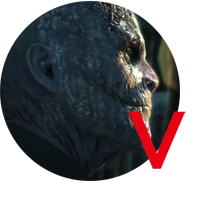
#6: Agent’s Recording
It’s hard to say how important Skull Face’s backstory is going to end up being to the plot of The Phantom Pain. MGS games can be pretty hit-or-miss with details like that. For every heartfelt deathbed confessional there’s a tedious, eye-rolling sob story. Is Skullface a Sniper Wolf or a Crying Wolf? Time will tell, but one thing’s for sure: it’s certainly not important to the events of Ground Zeroes, even though Skull Face spends seven and a half minutes droning on and on about it.
Was the intent to give Skull Face an aura of mystery, as though his haunting visage in all the MGS5 trailers weren’t enough? Was it to offer a humanizing counterpoint, an origin point for his unsettingly evil behavior in Ground Zeroes? The tape fails on either account, since it’s so devoid of actual details that could help develop his character. We only really know two things about him by the end: he likes torturing people, and he likes the sound of his own voice.
As with so many aspects of MGS5, I’m putting this one in the Jury’s Still Out Bucket. Skull Face might end up being a deep and enduring character, but if so, it won’t be any thanks to his hidden backstory tape in Ground Zeroes.
—
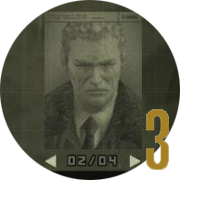
#5: Major Zero Changes His Name Back
Metal Gear Solid 3 is no stranger to lengthy radio conversations. For the third game running, there are hours and hours of recorded dialogue for players to discover, exploring the personalities and relationships of Snake’s support team. I think it’s to the each game’s credit that some of the series’s most popular characters are only ever visually represented by a tiny greenish portrait. Whether it’s Mei Ling sharing a Chinese proverb or Sigint indulging in some good old gun porn, it’s a great feeling to know these characters so well only on the strength of their dialogue.
Things stumble a bit, though, when these endearing character moments are dropped directly into the game’s critical path. It’s one thing for MGS3’s Major Zero to digress into a tangent about James Bond in an optional message on the way back from the save menu. It’s something else to interrupt a description of Snake’s crucial mission objectives to explain why — in excruciating detail — he changed his callsign to “Major Tom” and then decided to change it back again.
The Major Tom digression is just a silly joke, and the explanation is just a flimsy in-universe justification. That’s fine and dandy, but not when it’s presented right in the middle of important mission information the player would do well not to skip.
—
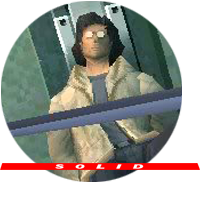
#4: “Just like one of my Japanese animes!”
Even before becoming a series tradition, the expository infodump was one of the most famous aspects of the first Metal Gear Solid. At a time when dialogue-intensive JRPGs were at the peak of their popularity, when cutscenes were viewed as a technological marvel, and when even passably-decent voice acting was considered a miracle, the switchbacks and intrigues of MGS1’s plot were solid gold. In retrospect, there are lots of scenes that seem quaint, and even a little embarrassing. But one in particular stands out as being particularly unnecessary.
Okay, it’s immediately evident why we’d need to pay attention to Metal Gear’s lead engineer. And it makes sense they’d want to preface that meeting with a memorable boss fight. And sure, considering who that boss ends up being, Snake’s emotional codec freak-out is perfectly understandable. And once the engineer is secured, a bit of soul-searching on his part is to be expected. And even though that’s already like six cutscenes in a row already, okay, I’m even willing to accept our new engineer friend being an anime dork as a bit of integral character development.
But was it really necessary to cut to footage of an actual giant robot anime, right in the middle of what is already one of the longest non-interactive sections of the game? I feel like we could have gotten the gist of Otacon’s character without having the point driven home that deeply. Again, this is the kind of tangent that belongs in an optional codec call, not spliced in the middle of a cutscene filled with actual story development.
—
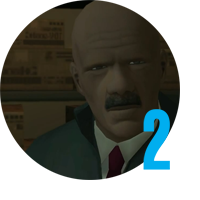
#3: Stillman’s Big Reveal
Otacon has an even more pointlessly embarrassing character moment in Metal Gear Solid 2, but he faces stiff competition from lots of other ancillary characters in terms of sheer time-wasting. The stated themes of MGS2 are the way thoughts and behaviors can be manipulated by diverting the flow of information, and many of the game’s conversations have a subversive bend in that direction. This is a game where every character has some big tragic secret they’re hiding, no matter how hard that square peg had to be pounded.
Raiden’s first mission on the Big Shell is to poke around the place disposing of C4 bombs. Enter Peter Stillman, the cynical explosives expert with a bum leg who taught the villainous Fatman everything he knows. Stillman supports Raiden with gear and instruction through the ordeal, but it becomes clear something isn’t quite right. Then the incredibly obvious shoe drops: it turns out the student has surpassed the teacher, and Fatman was two steps ahead of Stillman the whole time. Whoops! Now Stillman has to engage in the requisit noble sacrifice, giving Raiden an opening to take Fatman down for good.
But this being MGS2, there must be a dumber plot twist hiding behind the big one. And here it is: turns out Stillman doesn’t have a bum leg after all; he can walk just fine. He tells everyone he lost a leg when Fatman blew up a church because he feels guilty that Fatman blew up a church. Well, regardless of whether or not that makes sense, Stillman pours his heart out about his secret shame in a very long and very boring codec transmission that nobody cares about. And then he dies and all the other characters forget about him, so it matters even less.
—
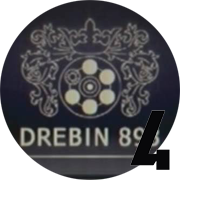
#2: Drebin’s Bedtime Stories
I adore Drebin. It was a gutsy move introducing an important new character into a cast already bloated with every bit player and cameo from three previous titles, but Drebin is both likeable and memorable. His moral ambiguity comes across as passably heroic in a world where human lives are a commodity. His smooth demeanor and helpful gameplay interactions make the whole SOP subplot a bit easier to swallow — a necessary function, given that without that ridiculous subplot the rest of Metal Gear Solid 4‘s story would fall apart. You’ll be subconsciously doing his little hand gesture sendoff every time he exits the screen. His pet monkey wears a tinfoil diaper. For all Drebin’s positive qualities, though, he’s not much of a storyteller.
Boss fights in MGS4 are already fairly long by design, and each one caps off with a cutscene where the boss wiggles her butt in your face for two minutes and then a second, stupider boss fight where she tries to hug you to death. And just when you thought it was time to move on, Drebin calls up and makes you listen to his atrocious B&B Corps fanfiction. It turns out all the militaristic robot women hellbent on killing Snake are actually tragic anti-heroines who have suffered atrocities that have left them psychologically traumatized, but didn’t actually mar their flawless porcelain skin. The first time he does this you’ll raise an eyebrow. The second time he does this you’ll realize, good god, he’s gonna do this every single time, isn’t he?
In MGS1 each villain had a deathbed monologue that developed them as characters, because such humanizing moments helped expand the moral grey area the plot wanted to play with later on. In MGS3 the individual bosses were less important than the overarching plot, so their backstories were relegated to optional radio conversations with Sigint as an afterthought. The B&B Corps in MGS4 aren’t interesting characters, though, and their stories are all the same: “War came to this poor girl’s town, and she had nightmares that an animal was killing everyone, and it turns out she was the animal all along, but then Snake came along and set her free and gosh, ain’t that just swell.”
The worst part? You can’t even call Drebin’s codec on your own time to indulge in a little gun porn. He’s probably sore because I downvoted all his fanfics.
—
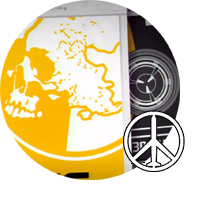
#1: The EVA Tapes
The structure of Peace Walker is mission-based, rather than objective-based, which means it had to shift gears a bit from MGS’s standard narrative flow. Instead of filing the little character moments into radio conversations that would eat into what are supposed to be bite-sized action scenes, each character instead has a set of tapes that unlock as you advance in the plot. You listen to these during the in-between moments while you’re faffing about on Mother Base. There are only a few characters, and only a couple tapes unlock at a time, so alternating between story missions, Mother Base chores and backstory feels pretty natural.
Except for EVA, Snake’s love interest from MGS3 who doesn’t have an in-person appearance in Peace Walker. I suppose it’s nice to know she’s still around, given the offscreen turbulence that has occured between the rest of the MGS3 cast in the last decade or so… but all her tapes unlock at once and it takes a solid hour to listen to them all. That’s an unacceptable amount of time for a character whose backstory we already know and who has no bearing on the events of the game we’re currently playing.
It gets worse. The actual content of the tapes — all seven of them — convey information the player already knows. “Snake, remember at the end of MGS3, when I talked at great length about how America pooped all over The Boss and then kicked her into a ditch? Well it turns out the poop was exceptionally frothy, there was enough of it to fill a dump truck, and the ditch was really the Grand Canyon filled with broken glass and termites. Oh, and they did it twice.”
MGS3 has one of the most emotional video game stories I’ve experienced, and EVA telling The Boss’s story was the perfect capstone to it. During Peace Walker I felt like it was tugging too much at a string best left alone, but in the end it handled The Boss’s “reappearance” in a pretty satisfying and respectful way. Peace Walker is one of the few MGS games with an uplifting ending — the first ending, that is, not the sooper-sekrit bonus ending. The depressing subject matter of the EVA tapes took away from that, and their content was entirely redundant to boot. Hopefully Snake recorded over them with some Bee Gees or whatever.
—
Coming up tomorrow, we’ll take a look at how the MGS games tackle everybody’s favorite hot button issue: good ol’ well-intentioned misogyny. (Spoiler: not very tactfully, as it happens!) Thanks for reading.
“He tells everyone he lost a leg when Fatman blew up a church because he feels guilty that Fatman blew up a church.”
It’s less that Stillman feels guilty that Fatman blew up a church and more that he feels guilty because he could’ve stopped Fatman from blowing up the church.
Lying about being a victim of the church explosion was a crutch Stillman used to save his own hide and career, because he knew the families of the real victims would be pissed if they found out the church blew up because the bomb disposal expert they called in was too afraid to do his job.